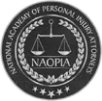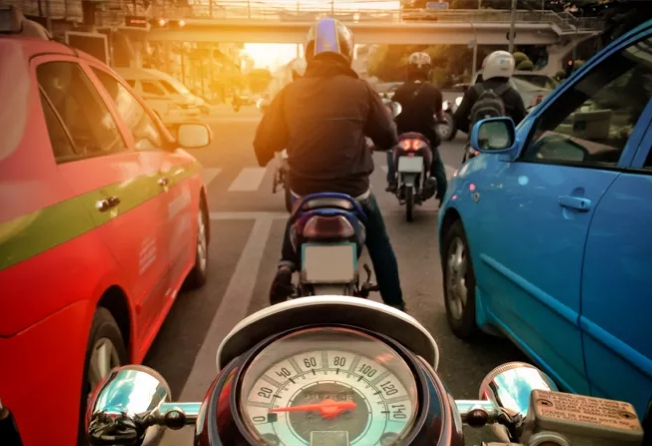Browse Services:
25+ YEARS OF EXPERIENCE
99% WIN RATE
NO UPFRONT FEES
Are you a motorcycle accident victim in California? As riders ourselves, we understand how accidents happen. And we know just how vulnerable riders are on California’s busy roadways.
That’s why we’re so passionate about helping injured riders get the damages they deserve. From gathering evidence to negotiating settlement, we’re driven to pursue your legal rights. And we’ll protect your best interests every step of the way.
We also proudly serve the families of riders tragically killed on CA roads. If you lose a loved one due to a motorcycle crash, we can help you secure justice on their behalf.
Our California personal injury lawyers know the risks that riders take on by choosing to ride a motorcycle, but we also understand why they do it. We know how much riding means to you – and we’ll do everything possible to apply California motorcycle accident law in your favor.
Don’t feel like you need to handle your injuries alone. Get help from experienced motorcycle accident lawyers in California. Contact us for a free consultation.


“If I ever need a lawyer again, I’m calling the May Firm. I was rear ended and had a ton of bills. They told me what my rights were and that they would take care of me. All I had to do was get to physical therapy. They did everything, and I ended up with a very nice settlement and a new car. Thank you! You exceeded my expectations!”
AMANDA ALLEN
Truck Accident
“A friendly and professional firm. Always answered questions quickly. Highly recommended to anyone who needs a personal injury lawyer. Extremely satisfied with the outcome.”
linda hughes
Car Accident
Natalie Garcia
Bicycle Accident









There’s no such thing as a typical motorcycle crash. Every case is entirely unique. However, the most common types of motorcycle crashes in California are:
So, for example, a rider may crash due to poorly maintained road lighting or roadways. They could also crash due to colliding with a fixed object or another vehicle.
What every crash has in common, though, is the potential for catastrophic injury – especially at speed.
Motorcycle riders can suffer anything from minor to life-changing injuries in a crash. Common crash-related injuries include:
No matter what type of motorcycle crash you have, the recovery process can be grueling. You may also be left with emotional trauma, such as stress, anxiety, and even PTSD. Our motorcycle attorneys in California can get you the medical care you need to help you recover.
Our trusted community medical partners don’t charge upfront fees – all costs are factored into your settlement. How does this benefit you? It’s one less expense to worry about.
Claiming Damages After a Motorcycle Crash
If you’re injured after a motorcycle crash, you can sue the at-fault party for damages. Compensation you can claim includes:
Even if you’re partially to blame for the accident, don’t let this deter you from making a claim. Our motorcycle accident lawyers will evaluate your case and determine the best way forward.

You may not always need a motorcycle injury lawyer. However, you should call the May Firm for advice if:
So, for example, if you are not injured, and there’s no damage, then you do not need an attorney. But if you’re injured at all, it’s always worth contacting attorneys to discuss the matter.
It can be helpful to be aware of just how common motorcycle crashes are.
According to the Insurance Information Institute:
However, motorcycle crashes can occur at any time. No matter when a crash occurs, our motorcycle injury lawyers are ready to help.
Here are some other critical facts you should be aware of:
Although not every motorcycle crash is serious, there’s always the potential for severe injury. And in some cases, it can take days, or weeks, for an injury to manifest. This is especially true for head, spine, and nerve damage.
Whether it’s a minor accident or a serious crash, the May Firm wants to know about it. Let our motorcycle accident attorneys in Southern California assist you today.

Unlike California bicycle laws, wearing a helmet is mandatory for motorcycle riders. This is unsurprising. After all, motorcycle riders are highly vulnerable to serious injury, even with protective gear.
Statistics show that failing to wear a helmet means riders are more susceptible to fatal injuries. Let’s consider why.
Whether you need a Southern or Northern California motorcycle accident attorney, don’t hesitate to call us. We’re here for you whenever you need us.
And if you lose a loved one to their injuries, then contact us. We’ll review the motorcycle accident case and help you secure the justice your loved one deserves.
“Rob May and his team achieved over and above what I ever anticipated. I am thankful I found them, and I hold them in the highest esteem. Should you ever need a conscientious and diligent personal injury lawyer, I strongly recommend Robert May. He’s awesome. Thanks, guys, for your patience and professionalism. You rock!”
JEANNE MELLO
Dog Bite & Attack
California offers some of the most dynamic motorcycle riding in the United States. The beautiful coastlines, rugged mountain passes, lush redwood forests, and scenic deserts are enough to entice any motorcycle enthusiast to take to the road.
Riding a motorcycle can be one of the most rewarding ways to experience this great state, but unfortunately, it can also be one of the most dangerous. Road hazards like debris or poor pavement, distracted drivers, and mechanical failure are all risk factors that increase the probability of a motorcycle crash happening in California. Riders should do their best to stay vigilant and practice defensive driving.
Even if you’re operating your motorcycle safely, the deck is stacked against you while you’re out on the road. The NHTSA states that most multi-vehicle crashes involving motorcycles are caused when other drivers don’t see the motorcycle — especially when taking left turns. Wearing bright, visible clothing is advised, as is wearing a DOT-certified helmet.
Be aware of state laws when riding a motorcycle in California. Operators are required to get a California motorcycle license. Even with a motorcycle driver’s license, you still need to invest some time getting familiar with your equipment, especially if you switch to a new bike.
Motorcycle accident claims are complex. The steps you take right after a crash could determine your chances of claiming damages!
So, should you be in a crash, here’s what our CA motorcycle lawyers suggest you do next.
What if you’re worried that you’re partly at fault for the crash? Remember, you shouldn’t let this stop you from calling us. We can explain what impact fault may have on your damages award.
If you think you have a case, contact us to speak with an experienced California motorcycle attorney. But in the meantime, here are the answers to questions we often receive from clients about their claims.
You may be surprised to learn that motorcycle accidents are no more common than other vehicular accidents. The difference is that a motorcycle accident is 35 times more likely to result in death: 56% of motorcycle deaths are caused by collision with other vehicles, 78% percent of the time, it’s a frontal collision, which is often tragically fatal.
Overtaking and Lane Splitting: One of the perks of having a motorcycle is that you can avoid traffic. A common practice is to drive between the spaces of other vehicles to overtake them. What most drivers are not aware of is that other vehicles don’t see them coming.
Cars are not expecting a vehicle to pass while they are stuck in traffic. An accident can happen quickly when a car simply goes out of its lane, makes a turn, or shifts the angle of the vehicle without checking for an unexpected motorcyclist splitting lanes.
Driving While Drunk or Drugged: Half of motorcycle accidents are caused by drunk drivers. A motorcycle is vulnerable while traveling down the road with bigger vehicles. Drivers need to have full control of the vehicle or else the danger is multiplied several times. Since the motorcycle does not provide any protection, accidents often result in serious injury or death.
Roadblocks and Potholes: Anything that stands in the way of a motorcycle is a serious threat, and 25% of motorcycle deaths are caused by colliding with unexpected objects.
Road Conditions: Wet roads, uneven roads, potholes, construction projects, and other road hazards can be a danger to motorcycle riders. These can cause the motorcycle to skid, overturn, and throw the driver off their seats.
Blind Spots and Glares: A motorcycle driver has blind spots, even when they’re wearing high-quality helmets. Other drivers might not see them coming if they are fighting direct sunlight or glare from nearby objects.
The fact that a motorcycle provides very little protection to the driver means that injuries are more likely and oftentimes more severe.
You need a motorcycle accident lawyer if you’re in a bike crash in California. Our attorneys can get you the answers you need – and the damages you deserve – after your accident.
You only have two years from the time of the accident to file a suit. You have a legal right to pursue compensation for any personal injury or damage to your motorcycle. Motorcycle accidents often result in lost wages, psychological trauma, and severe physical pain. Medical expenses can add up quickly — especially if you have injuries that require long-term treatment.
Motorcycles can be dangerous vehicles. They offer very little protection to the driver, and the smallest of accidents can cause serious injury and even death. There are so many factors that can contribute to a motorcycle accident that even if the driver takes all precautions, sooner or later an accident is bound to happen.
We hope it does not happen to you, but if it does, you should know the right steps after a motorcycle accident.
As a motorcycle rider, you need to be aware of the motorcycle and helmet laws in your state, your legal rights, and what you can be compensated for. Seventy percent of motorcycle accidents are caused by other vehicles. When an accident happens, the strength of your claim will depend on the actions you take 24 hours after the accident happens.
Below, we’ve outlined the first steps following a motorcycle accident:
Do Not Leave the Scene: Leaving the scene of an accident can be construed as hit and run.
Assess the Injuries Sustained: Check if you or your passenger were injured. Since you are driving a motorcycle, you will most likely have injuries. Call for assistance.
Seek Medical Attention: Your safety and your passengers are your primary concerns. Even if you do not feel pain, have yourself checked for internal injuries that may present symptoms in the future.
Document All Your Injuries: Take pictures of bruises or wounds sustained in the accident. Tell your doctor about them, and ask for a medical report. Include any treatment and medication recommended by the doctor.
Inform the Proper Authorities: Report the accident to the police or the California Highway Patrol. Serious accidents resulting in death, injuries, or damages that exceed $750 should be reported to the DMV within ten days. You, your insurance agent, or your lawyer must complete and submit the SR1 form whether you caused the accident or not.
Do Not Apologize or Discuss Fault: We automatically say, “I’m sorry,” when someone gets hurt, whether it is our fault or not. In a motorcycle accident, DON’T APOLOGIZE. Acts of kindness and any statement you make on the scene of the accident can be used against you when you file a claim.
Do Not Talk to Insurance Companies: Find a qualified motorcycle accident lawyer right away. They are well versed in motorcycle laws and personal injury claims, and you can tell the insurance company to contact them when they call you. You do not have to answer their questions if you have engaged a motorcycle accident attorney.
Get All the Information: If it is safe and you are able to do so, ask for the other driver’s license, car registration, and insurance documentation. If you have a smartphone, get permission to take pictures of these documents for your file. Take pictures of the scene of the accident and the plate numbers of all vehicles involved.
Find Witnesses: If there are bystanders who witnessed the accident, try to get their names and contact information.
Do Not Accept Settlement Offers: Your first instinct is to get it over with, especially if you do not feel like you or your passenger were injured. Do not accept an insurance settlement offer without speaking to a California motorcycle accident attorney.
You may have sustained injuries that have not yet become apparent. If injuries emerge after you’ve settled, the waiver you signed will prevent you from seeking compensation to cover ongoing medical treatment.
Do Not Immediately Repair Your Motorcycle: When you file a claim, your motorcycle can be used as evidence. Keep it as it is until after the case.
Motorcycle accidents can result in a loss of income because you may be unable to work until you fully recover from the psychological trauma and pain caused by your physical injuries. You’ll also need to repair or replace your motorcycle after an accident.
If you follow the steps outlined above, you will have a chance to recover any losses you incurred from the accident and be compensated for the injuries you sustained.
Contact a California motorcycle accident lawyer to find out your next steps after an accident. The May Firm is standing by to help take over the process and allow you to focus on recovery while confident in the knowledge that an experienced team is fighting for the compensation you deserve after your accident.
With the weather and great views, Fresno, California, can be a great place for riding a motorcycle; however, it can also be a dangerous one, with motorcyclists 25 times more likely to die in a traffic accident than those driving cars. In 2009 there were 385 fatal motorcycle accidents in the state.
The best solution to this is to stay ultra-alert, wear the correct gear (pads, helmet, etc.), and drive carefully. But what happens if you are involved in a motorcycle accident in California? Hundreds of these types of accidents are investigated by insurance companies every year, and this will give you a good idea of what to expect if you are ever involved in an accident that wasn’t your fault. Bearing this information in mind, you can give yourself the best chance of getting compensation for your accident.
Why an Investigation?
It is a sad public misconception that motorcycle accidents are often the fault of the motorcyclist. Motorcycle investigations are essential in challenging this idea, either during the claims process or if the case ends up in court. We have motorcycle accident investigations to accurately find the sequence of events and the cause of the accident, which can back up the validity of your claim.
Statements at the Scene
When you have been involved in a motorcycle accident, you will be expected to give a statement at the scene of the accident. Accident victims can often be in shock or confused about exactly what happened. In this situation, try to keep a clear head and report the simple facts of what happened — not whose fault it might be.
Accidents are often traumatic and difficult experiences, and it is not always obvious whose fault they are. The other party, plus witnesses, will also make statements, which may coincide with or argue against your own.
Giving a statement to police will provide a reliable record for whatever comes next and may also be used by your insurance company, which should also be contacted as soon as possible after the accident has occurred. This brings us to our next point.
Contact Your Insurance Company
This should be done as soon as it is reasonable to do so. The best way to do this is by using the toll free number usually provided. Be prepared to give the company as much information as possible, including the police report number (or incident number), the other person’s details and insurance info, and the names and contact numbers of any witnesses involved.
All of this information will aid any investigation that may occur, but do not admit any fault. Just give the facts as they happened, and assume that your call is being recorded for legal purposes.
The person dealing with your claim may ask you about any property damage or physical injuries; however, it may be too soon to know the full extent of either. In this scenario, it is best not to guess as injuries can manifest days or even weeks after an accident has occurred.
It is wise to consult a physician if you feel you have any injuries, such as whiplash or aches and pains. Of course, broken bones or any other serious damage will be much more apparent and can be reported along with any medical bills.
As for your motorcycle, it is best to wait until a mechanic has carried out a full inspection. When assessing the damage, also keep hold of any bills or receipts that you can use in your claim.
Fault Assessment
Assessment of fault can involve looking at all the evidence, such as witness statements, expert investigations, police investigations, photographic or CCTV evidence, reconstructions of the scene, and assessment of the damage caused by the accident.
If it becomes clear that the other person was at fault (they ran a red light or you were rear-ended, for example), your insurance company may decide to work directly with their insurance company to pay for any damage that was caused. If the person does not have insurance, you would be entitled to payment from your uninsured motorist coverage, if applicable (strongly recommended).
However, it is possible that your damages will exceed your policy limits, and it is then advisable to contact a motorcycle lawyer.
If it is found that you were at fault by an insurance company, it could stay on your record and affect any future coverage you decide to take out, which is why finding the right lawyer is a must. The right lawyer can provide you with valuable assistance on making a claim and either clearing your name or taking the best course of action.
Seventy percent of all motorcycle accidents in California are caused by the negligence of other drivers. A motorcycle driver is particularly susceptible to personal injury since a motorcycle does not provide any protection to the driver. Statistics say that a fatal outcome is 35 times more likely in motorcycle accidents than in other car accidents.
When you are involved in an accident, the next best thing to do after seeking medical attention is to hire the services of a motorcycle accident injury litigation lawyer.
Under California motor accident law, a person who sustained an injury through the negligence and carelessness of others is entitled to recover past and future medical costs, past and future lost wages, property damage, rental vehicle expense, and pain and suffering. You need to hire a lawyer who is experienced in motorcycle accidents and motorcycle litigation. They can determine if you have grounds for a lawsuit and the amount of compensation you’re entitled to.
It is better to have a motorcycle accident injury lawyer determine whether you have a case for a lawsuit or not. They are more experienced in dealing with motorcycle litigation and may see angles to the accident that are not obvious to you.
Motorcycle drivers have the same rights and privileges as other drivers on the road. It has been estimated by the National Highway Traffic Safety Administration that half of motorcycle accidents happen because another vehicle turned into the path of the motorcycle.
The most common reason used by defendants in motorcycle accident injury litigation is that they were looking out for other vehicles and did not notice the motorcycle until it was too late. That doesn’t excuse the fact that they failed to look and identify you in their path.
Before you contact a motorcycle accident injury lawyer, you need to provide the evidence to help them file a lawsuit. Here’s what you need to prepare:
The Litigation Process
In the investigation phase, your lawyer will question you about the accident, your driving history, and your injuries. Once your lawyer is satisfied with all the information they have, they will begin negotiating with the insurance company of the other driver. They will begin by sending a Demand Letter informing them of your intent to pursue reasonable damages to make up for the injuries you sustained as well as the current and future costs of your medical bills.
This may put you on the path toward a motorcycle accident lawsuit, but it’s important to take strong steps to secure the compensation you deserve.
If the insurance company agrees to a reasonable settlement amount, your lawyer will assist you in quickly settling the claim. If the insurance company contests the claim, your lawyer will file a claim with the court, and the litigation process will begin.
Most claims are settled before they go to court because litigation is also costly for the insurance company. If they can quickly negotiate a settlement, they will.
If you’re involved in a serious motorcycle accident, qualified legal representation is a necessity. You haven’t spent the past few decades of your life holding negligent drivers accountable and protecting families as they struggle to rebuild their lives after a motorcycle accident in California. The motorcycle accident attorneys at the May Firm have.
An attorney does more for you than just negotiate with the insurance company. They also research the events of the accident itself. This can include expert analysis from outside professionals, a review of the accident scene, interviews with witnesses, and research into all of the facts surrounding your motorcycle accident claim.
Sadly, insurance companies often work against the drivers they insure. They want to maximize the premiums you pay and minimize the payouts they send out the door. You should never agree to an accident settlement before having it reviewed by a knowledgeable attorney.
Often these settlements greatly undervalue the true costs of an accident, which may not be apparent at first. Many accident injuries are not immediately obvious. It may take days or perhaps a week or more for the true extent of certain types of injuries to become apparent. If you’ve already agreed to a settlement at this point, you have not been fairly compensated for what you are truly owed.
Hire one of the best Fresno motorcycle accident injury lawyers specializing in motorcycle accidents. The May Firm is standing by to help.
Have you been injured in a motorcycle crash in California? Then you deserve effective, compassionate legal representation. And that’s where our motorcycle injury lawyers can help.
At the May Firm, we treat clients like family. Our motorcycle lawyers in California truly care about every client. No matter whether it’s a minor or serious accident, your case is our priority. And we will do everything possible to get you the justice you deserve.
When you call us, we’ll schedule a no obligation meeting to discuss your case. We’ll explain your legal rights and if you have a claim. If so, we’ll help you determine how to proceed.
It’s our goal to settle your case outside of the courtroom. After all, this allows you to move forward more quickly. However, should court be the only way to secure fair damages, rest assured we are ready to proceed on your behalf.
Our attorneys will accurately determine what you case is worth – and we don’t charge anything unless we win your case. So, there’s nothing to lose by calling our motorcycle accident lawyers in California! Contact us now to tell us what happened.

